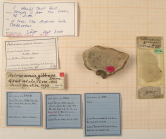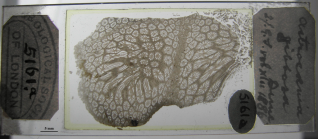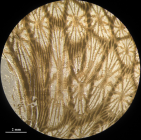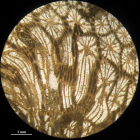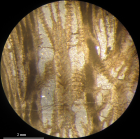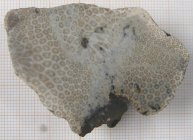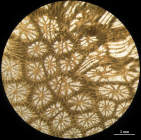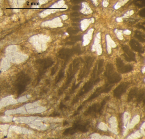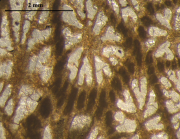Scleractinia taxon details
Stelidioseris gibbosa Tomes, 1893 †
1455947 (urn:lsid:marinespecies.org:taxname:1455947)
accepted
Species
marine, fresh, terrestrial
fossil only
Tomes RF. (1893). Description of a new genus of Madreporaria from the Sutton stone of south Wales. <em>Quarterly Journal of the Geological Society of London.</em> 49: 574–578. [details]
Holotype BGS GSM 5161, verbatimGeounit Sutton stone of...
, Note Sutton stone of Glamorganshire (Great Britain)...
Holotype BGS GSM 5161, verbatimGeounit Sutton stone of Glam... [details]
Type locality Sutton stone of Glamorganshire (Great Britain) according to Tomes 1893. The preservation style suggests a mistake. This looks like excellently preserved samples of Upper Cretaceous from Austria as mentioned by H. Löser on a label associated with the type-specimen. It could be also an Eocene fossil of Courtagnon or an Oligocene fossil of the Magdeburg area (R. Baron Szabo oral com. ) [details]
Hoeksema, B. W.; Cairns, S. (2024). World List of Scleractinia. Stelidioseris gibbosa Tomes, 1893 †. Accessed at: https://www.marinespecies.org/scleractinia/aphia.php?p=taxdetails&id=1455947 on 2024-09-18
original description
Tomes RF. (1893). Description of a new genus of Madreporaria from the Sutton stone of south Wales. <em>Quarterly Journal of the Geological Society of London.</em> 49: 574–578. [details]
basis of record Löser H. (2011). Revision of Actinastrea, the most common Cretaceous coral genus. <em>Paläontologische Zeitschrift.</em> 86 (1): 15-22., available online at https://doi.org/10.1007/s12542-011-0110-4 [details]
basis of record Löser H. (2011). Revision of Actinastrea, the most common Cretaceous coral genus. <em>Paläontologische Zeitschrift.</em> 86 (1): 15-22., available online at https://doi.org/10.1007/s12542-011-0110-4 [details]
Holotype BGS GSM 5161, verbatimGeounit Sutton stone of Glam... [details]
From editor or global species database
Type locality Sutton stone of Glamorganshire (Great Britain) according to Tomes 1893. The preservation style suggests a mistake. This looks like excellently preserved samples of Upper Cretaceous from Austria as mentioned by H. Löser on a label associated with the type-specimen. It could be also an Eocene fossil of Courtagnon or an Oligocene fossil of the Magdeburg area (R. Baron Szabo oral com. ) [details]
